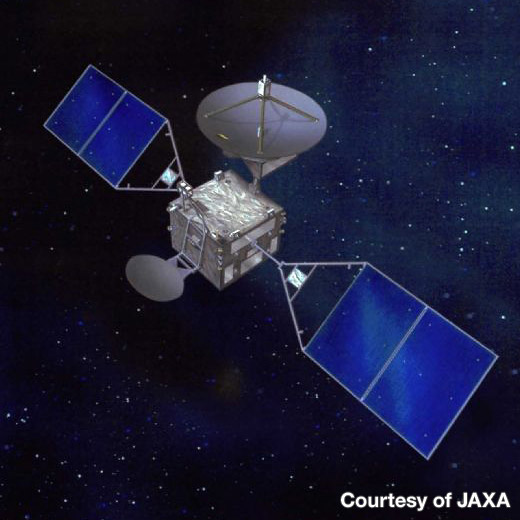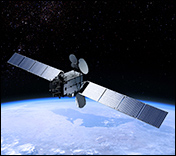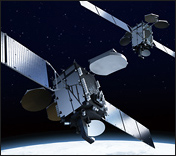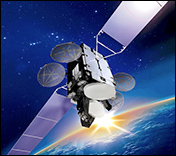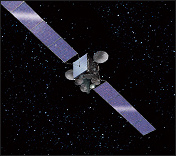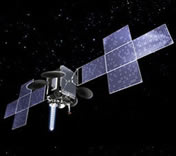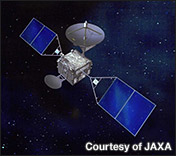Satellite ProgramsCommunication Satellites
Es'hail 2
Es'hail 2 will offer direct broadcasting services throughout the Middle East and North Africa, catering to television stations such as Al Jazeera and beIN SPORTS
Mitsubishi Electric has been awarded a contract to deliver the Es' hail 2 communications satellite to Es' hailSat, a satellite operator in Doha. With a design life of more than 15 years, Es' hail 2 will directly broadcast television programs throughout the Middle East and North Africa, serving television stations such as Al Jazeera and beIN SPORTS. From the orbital position of 26 degrees east longitude, its Ku-band and Ka-band capabilities will also provide government communication services and the world's first geostationary amateur radio service.
-
Client
Es'hailSat (Qatar satellite company)
-
Launch date
November 16, 2018
-
Launch Vehicle
Falcon 9
-
Launch site
Cape Canaveral
-
Orbit
Geostationary orbit
-
Mass
--
-
Design life
More than 15 years
-
Responsibilities
Prime contractor
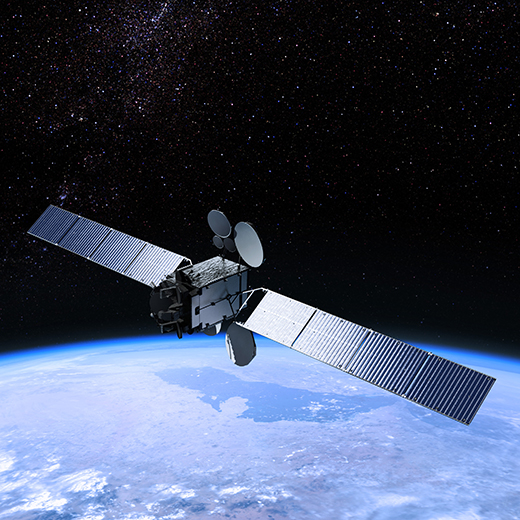
TURKSAT-4A/4B
Each satellite having a minimum service life of 15 years will enable TURKSAT A.S. to provide telecommunication and direct TV broadcasting services throughout Turkey, Europe, Central Asia, the Middle East and Africa.
In March 2011, Mitsubishi Electric was awarded a contract for two turnkey projects for which it will deliver the TURKSAT-4A and TURKSAT-4B communications satellite to Turksat Satellite Communication, Cable TV and Operation Inc. Co. (TURKSAT A.S.). These satellites will enable TURKSAT A.S. to provide communication and broadband services over a wide geographic region covering Turkey, Europe, Central Asia, the Middle East and Africa.
TURKSAT-4A will be positioned at 42 degrees east longitude and TURKSAT-4B will be positioned at 50 degrees east longitude.
-
Client
TURKSAT A.S.
-
Launch date
TURKSAT-4A: February 15, 2014;
TURKSAT-4B: Planned in 2015 -
Launch Vehicle
Proton
-
Launch site
Baikonur Cosmodrome
-
Orbit
Geostationary orbit
-
Mass
Approx. 4.8t (at launch)
-
Design life
More than 15 years
-
Responsibilities
Prime contractor
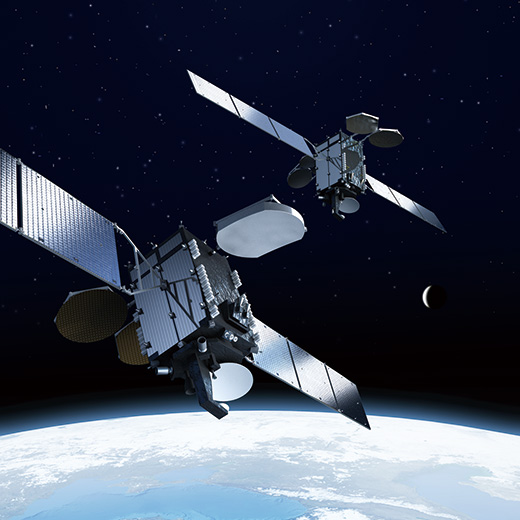
ST-2
ST-2 became the first Mitsubishi Electric's commercial communications satellite ordered from abroad, using the DS2000 satellite platform made in Japan. Mitsubishi Electric is responsible for the whole satellite system design.
-
Client
Singapore Telecommunications Limited,
Chunghwa Telecom Company Limited,
ST-2 Satellite Ventures Pte Limited -
Launch date
May 20, 2011
-
Launch Vehicle
Ariane-5
-
Launch site
Guiana Space Centre
-
Orbit
Geostationary orbit
-
Mass
Approx. 5t (at launch)
-
Design life
More than 15 years
-
Responsibilities
Prime contractor
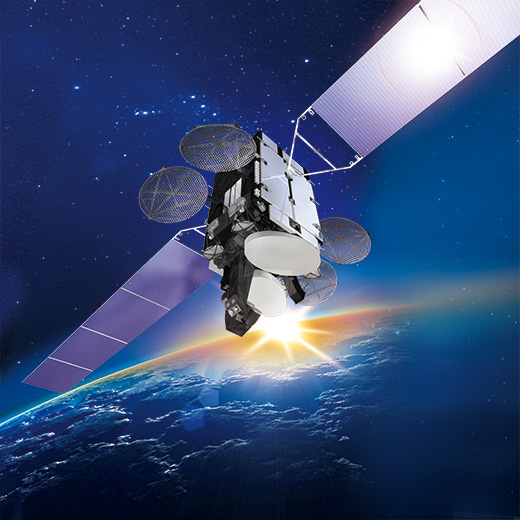
SUPERBIRD-C2 (7)
SUPERBIRD is the name of the series of high-performance communications satellites owned and operated by SKY Perfect JSAT Corporation.
The SUPERBIRD-C2 is the successor of the SUPERBIRD-C. It will cover the Asia-Pacific region, the Indian Ocean, Oceania, and the Pacific Islands, playing a vital role in satellite communications both in Japan and across these areas.
-
Client
SKY Perfect JSAT
-
Launch date
August 15, 2008
-
Launch Vehicle
Ariane-5ECA
-
Launch site
Guiana Space Centre
-
Orbit
Geostationary orbit
-
Mass
Approx. 5t (at launch)
-
Design life
More than 15 years
-
Responsibilities
Prime contractor
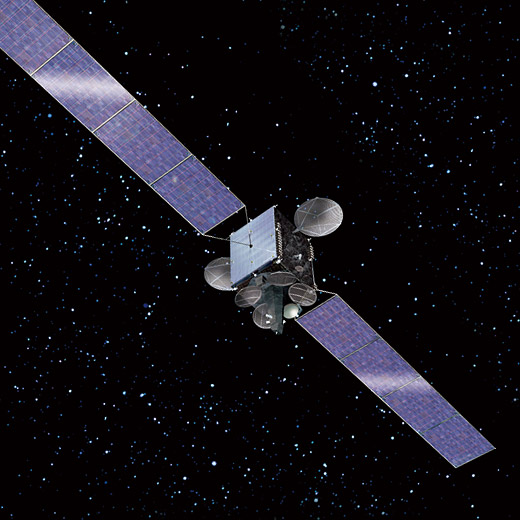
OPTUS C1
Singtel Optus is a third-generation system designed to replace an existing spacecraft in the Singtel Optus communications constellation. It provides communications coverage for Australia, New Zealand and Asia.
OPTUS C1, was successfully launched on June 11 from the Spaceport in French Guiana.
OPTUS C1 is designed to increase the capacity for satellite communications services of Australia's leading satellite operator SingTel Optus, our first client outside of Japan. As prime contractor, Mitsubishi Electric was responsible for manufacturing all communications systems.
With 16 antennas, 18 beams and four different frequency bands, the C1 satellite delivers broadcast services such as direct-to-home TV, high-speed internet and voice and data communications to Australia, New Zealand, Southeast Asia and Hawaii.
-
Client
SingTel Optus Pty., Ltd.
-
Launch date
June 11, 2003
-
Launch Vehicle
Ariane 5G
-
Launch site
Guiana Space Centre
-
Orbit
Geostationary orbit
-
Mass
Approx. 5t (at launch)
-
Design life
15 years
-
Responsibilities
Prime contractor Total Program Management Payload Subsystem
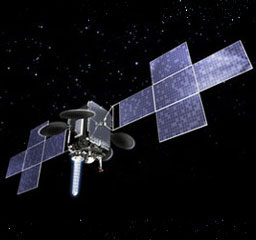
DRTS
DRTS has been playing essential role in satellite communications over Japan,
conducting communications between satellites in low-orbit and ground stations.
DRTS stands for the Data Relay Test Satellite. This system supports the space infrastructure needed for the deployment of space operations in the early 2000s, serving as the space communications infrastructure for two-way data relay between ground stations and experimental spacecraft in low to mid-altitude orbit. The DRTS system is essential for relaying the large volume of observational data for global & real-time monitoring of the earth, which is acquired by earth observation satellites such as ADEOS-2 and ALOS.
The DRTS system is also essential for supporting increasing volumes of experimental data from the operation of JEM (Japanese Experiment Module) in the space station, and for supporting the advanced experiment support and other operational demands of many future spacecraft.
-
Client
JAXA
-
Launch date
September 10, 2002
-
Launch Vehicle
H-IIA
-
Launch site
Tanegashima Space Center
-
Orbit
Geostationary orbit
-
Mass
Approx. 2.7t (at launch)
-
Design life
7 years
-
Responsibilities
Prime contractor
